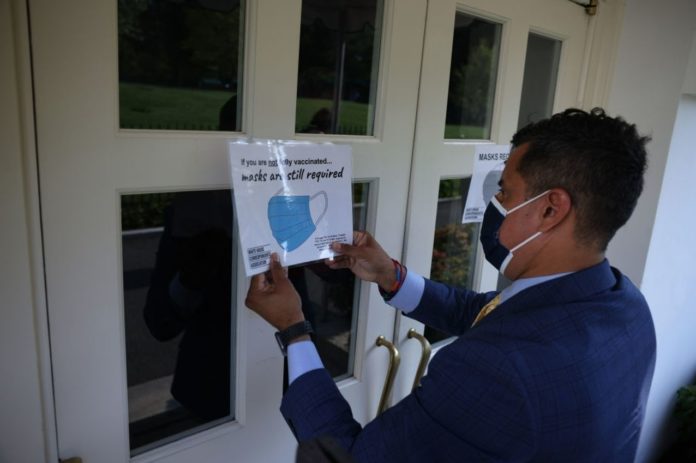The CDC announced that fully vaccinated people could go without masks in most situations, a policy recommendation that was meant to help restore a sense of normalcy, but a new study argues that it ignored certain realities that left some groups vulnerable.
The fact that there is no way to tell whether a person is fully vaccinated against COVID-19 was a major flaw in the CDC’s May mask guidance. As a result, the CDC had to rely on the ‘honor system’ to ensure that people who had not been vaccinated continued to wear masks.
- Does This Mean We Stopped Being Animal and Started Being Human Due to ‘Copy Paste’ Errors?
- The One Lifestyle Choice That Could Reduce Your Heart Disease Risk By More Than 22%
- Aging: This Is What Happens Inside Your Body Right After Exercise
- Immune-Boosting Drink that Mimics Fasting to Reduce Fat – Scientists ‘Were Surprised’ By New Findings
- Gun Violence in America: What They Don’t Talk About at the Debate
However, previous research indicates that people often lie about personal health information to avoid being judged.
For a variety of reasons, black people in the United States were the group most likely to suffer the consequences of that failure.
For instance, at the time the CDC issued the mask guidance in mid-May, only 28% of Black Americans had received at least one dose of the COVID-19 vaccine, compared to 42% of white Americans and 52% of Asians.
Furthermore, Black Americans are far more likely than white Americans to be employed in essential jobs, implying that working remotely will not reduce their risk of infection.
Because black Americans have more medical comorbidities, infected people are more likely to become seriously ill. According to the study, during the COVID-19 pandemic, Blacks have had disproportionately high rates of virus infection, hospitalisation, and death.
All of these factors made the CDC guidance a threat to the Black community.
A more nuanced approach, study suggests, might have used “quantitative benchmarks” to determine when it’s safe for a community to unmask, says the study author.
One approach might be to set goals for what proportion of a community must be fully vaccinated before unmasking is recommended in a state, possibly with higher thresholds in certain racial or ethnic communities, the study suggests.
Digital health passes that could verify vaccination status are another tool that the CDC could explore.
To authors, that’s a step in the right direction, since the new guidance is using its own quantitative benchmark—degree of transmission in a county—to determine whether masks are necessary for vaccinated people.
- Does This Mean We Stopped Being Animal and Started Being Human Due to ‘Copy Paste’ Errors?
- The One Lifestyle Choice That Could Reduce Your Heart Disease Risk By More Than 22%
- Aging: This Is What Happens Inside Your Body Right After Exercise
- Immune-Boosting Drink that Mimics Fasting to Reduce Fat – Scientists ‘Were Surprised’ By New Findings
- Gun Violence in America: What They Don’t Talk About at the Debate
“But it’s too little, too late. Once you have swung the pendulum in the direction of abandoning all caution, it’s hard to walk it back,” says the lead author, adding that public health authorities should focus on increasing vaccination rates overall, including in communities of color, and promoting greater health equity: the idea of removing barriers to good health for all.
